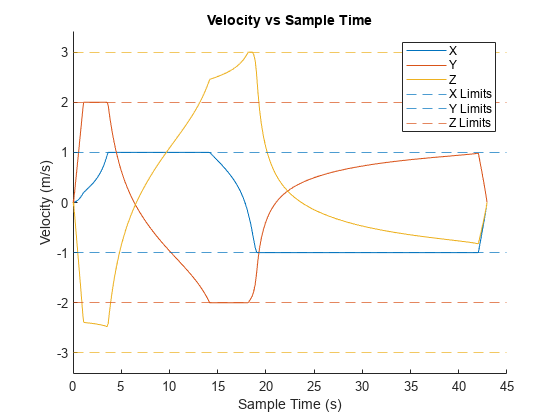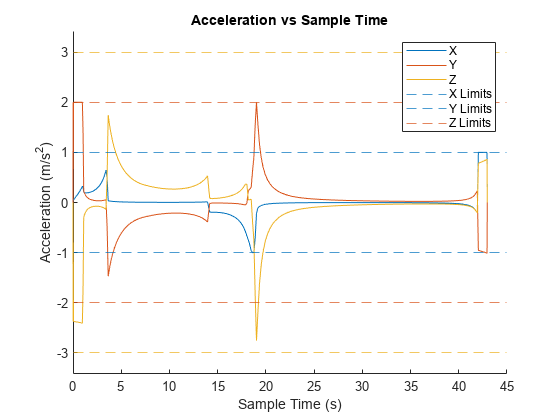contopptraj
Syntax
Description
Note
The contopptraj function requires Optimization Toolbox™.
[
generates a trajectory by fitting a path to a set of waypoints
q,qd,qdd,t] = contopptraj(waypoints,vellim,accellim)waypoints. The function returns a time-optimal trajectory along the
path for position q, velocity qd, and
acceleration qdd at sample times t, while
constrained by the velocity vellim and acceleration limits
accellim.
[___] = contopptraj(___,NumSamples=
specifies the number of samples to use when generating the trajectory, in addition to any
combination of arguments from previous syntaxes.N)
[___,
outputs solution information solninfo] = contopptraj(___)solninfo with diagnostic information
associated with the output trajectory, in addition to any combination of arguments from
previous syntaxes.
Examples
Input Arguments
Output Arguments
References
[1] Pham, Hung, and Quang-Cuong Pham. “A New Approach to Time-Optimal Path Parameterization Based on Reachability Analysis.” IEEE Transactions on Robotics, 34, no. 3 (June 2018): 645–59. https://doi.org/10.1109/TRO.2018.2819195.
Extended Capabilities
Version History
Introduced in R2022b


